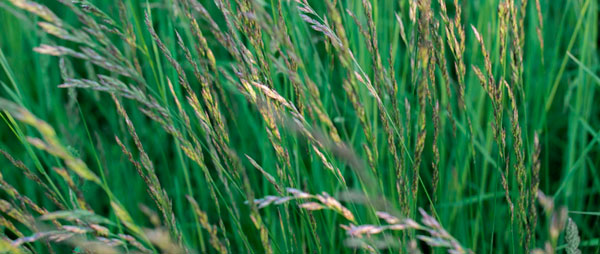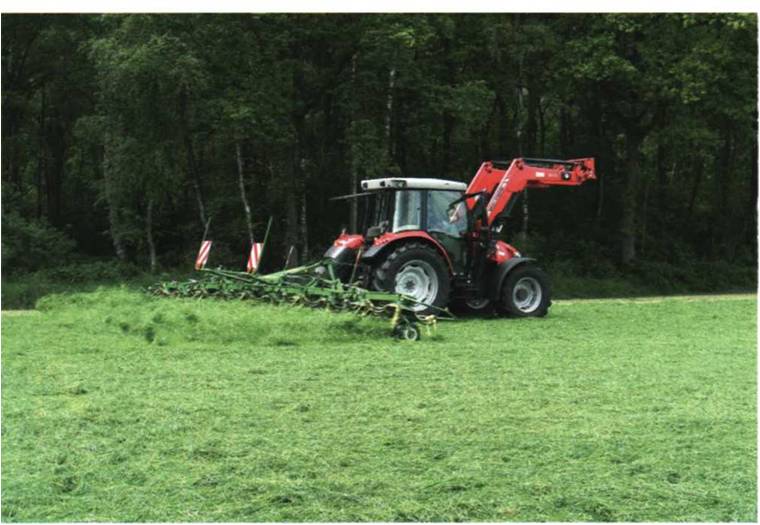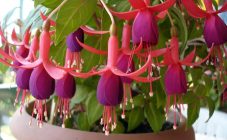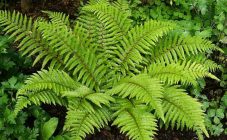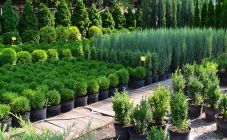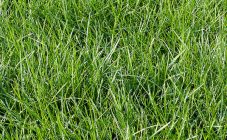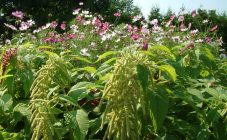Content:
This herbaceous plant belongs to the cereal family. It grows mainly in Europe, Asia, African countries and the southern part of Western Siberia. The second name of the plant is perennial chaff. This grass variety prefers an area with a mild and humid climate. Grown for landscaping lawns and creating pastures for animals. In the wild, perennial ryegrass can be found in meadows, forest glades and along roads.
Before sowing work, many are interested in the question of what ryegrass grass is and what is it for. A detailed description of perennial ryegrass for lawns or pastures will help to obtain the necessary information.
Description of ryegrass culture
The plant has a strong root system that grows rapidly. It grows in length up to 70 cm. The stems of ryegrass are smooth and well branched. Bright green leaves do not lose their color until the onset of frost. The plant has long and thin plates about 30 cm in size. They are smooth to the touch, but rough in the veins. The base of each plate contains ears. The inflorescence looks like a drooping spikelet. On an ear, from 5 to 10 flowers usually bloom, from which ryegrass seeds subsequently ripen.
Varieties of ryegrass
The plant is considered a weed, but is actively used as a lawn grass and for feeding livestock. There are several varieties of ryegrass with distinctive features:
- Pasture ryegrass. A distinctive feature of the herbaceous perennial can be called rapid germination and more intensive growth. Already in the first year after sowing the crop, a dense bright green carpet is formed on the lawn or in place for pasture with a well-developed root system. After mowing, it grows very quickly and retains its decorative qualities until the onset of the winter period.
- Ryegrass is high. The middle-summer grass reaches a length of 80 to 150 cm. It grows in dense turf. The tall ryegrass herb has flat and rough leaves and long shoots with a panicle at the end. The flowering period begins in late May and early June. It is considered a drought tolerant crop, but responds well to watering.
- Bulbous ryegrass. The remarkable decorativeness of the grass will be noted even with minimal maintenance, therefore it is often used for the design of various lawns. The plant is a perennial species of the cereal family. The rhizome is located shallow, so after 3 years the roots with bulbs can come to the surface of the soil. If such a nuisance happens, you need to cover them with earth and transplant the bulbous ryegrass to another place. The leaves of the ryegrass bulbous variegat have a golden motley color.
- Annual ryegrass. It is mainly amenable to cultivation in Russia, together with legumes for green fodder for animals or for preparing fodder for the winter. Planting is carried out using seeds, which are pre-treated with drugs.The plant is used as a covering material for meadows, places that have poorly endured the winter and contain little grass, where farm animals can be grazed for nutritious green fodder.
- Multi-cut ryegrass. Grows well in areas with mild winters and humid summers. The multi-cut ryegrass is distinguished by its rapid development and a remarkable ability to give several productive shoots after mowing. It can be used not only for efficient filling of pasture areas, but also for decorating lawns in any garden or summer cottage. The variety is absolutely unpretentious in the choice of soil: it can be planted on clay, peat and sandy soils.
Advantages of pasture ryegrass
The main advantage of the crop is its high yield. This fact makes pasture ryegrass a popular plant used in animal feeding. In parallel with an important advantage are the following advantages of the herb:
- The herb is not only an excellent fertilizer for the soil where it grows, but also a medicine for the land. Growing ryegrass prevents erosion.
- It goes well with other herbal crops.
- After the first mowing, the plant acquires a high re-growth rate.
Sowing and cultivation features
In order for perennial ryegrass for lawn planting to grow into a beautiful thick cover, the technology must be observed when sowing seeds. When sowing occurs, you need to determine the area and use the approximate number of seeds. The rate for 1 ha of land is 10 kg of planting mixture, and for sowing for livestock feed - 13 kg. Observing the approximate dosage, one can hope for an excellent herb yield.
When sowing in open ground, it is desirable to provide moderate moisture to the soil. The planting depth should not exceed 3 cm. The ground should be dug up and nitrogen supplements should be added to enhance grass growth. After digging, you need to break all the bumps and level the soil with a rake. Then the seeds are fanned out.
The grass is unpretentious to growing conditions, but some nuances should be taken into account. If ryegrass is grown on the lawn, then the needs of other plants that make up the composition should not be neglected. The best seeding time is spring. If it is rainy time, then you should not be puzzled by watering, well, but if the weather is dry and warm, you need to provide the plants with a regular flow of water. To avoid weeds that inhibit the normal development and growth of the plant, the soil should be treated with special herbicides. You can do this in the fall after work on the ground, or in the spring - before planting.
The lawn grown using perennial ryegrass always looks well-groomed and attractive. Throughout the summer period, the private property will be decorated with a bright green dense carpet of grass. Having engaged in the improvement of the local area, you can immediately purchase a mixture of herbs, which includes not only chaff, but also meadow bluegrass, fescue, bent grass and many other representatives of forbs. Paired with ryegrass, they will look very impressive.

